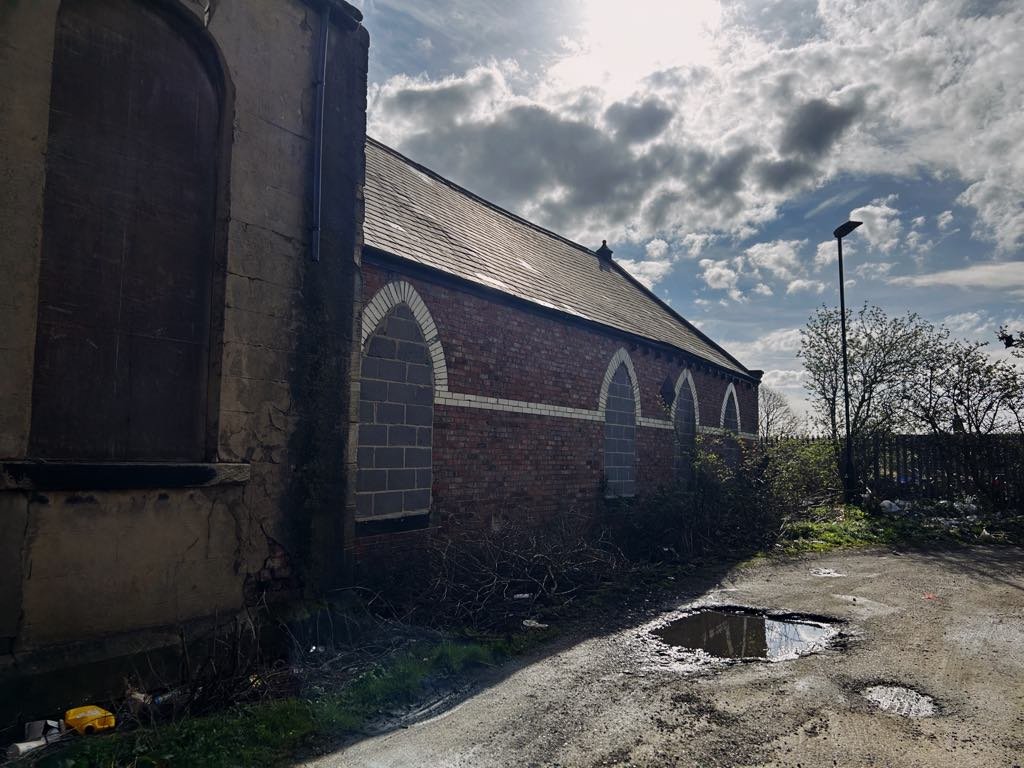
Colliery Row Wesleyan Methodist Church
Fencehouses, Sunderland
Last Updated:
2 Sept 2024
Fencehouses, Sunderland
54.840872, -1.492826
Site Type:
Church, Place of Worship
Origin:
Status:
Extant
Designer (if known):
Forlorn and not in use

Fencehouses has some incredibly beautiful buildings that are just sat dormant? Other villages have seen these bits of social infrastructure demolished, but it's almost like a lack of development leaves us with these forlorn relics of an age we'll never see again.
The Wesleyan Chapel on North View Terrace epitomises this. An absolutely stunning stone chapel built in 1872 for the growing settlement of Colliery Row. A congregation had been in these parts for 50 years prior, but were originally in an end terrace down the road.
For some time this smaller chapel was unfit for purpose as the industries grew, and could only accommodate half the congregation. As a result local industrialists - Messrs Hopper & Ratcliffe, the Marquis of Londonderry and the Earl of Durham donated £50, £30 and £10 respectively to construct this site provided by the Hetton Coal Co.
It's in the Early English style with lovely white stone dressing and could hold 250 people. It became part of the Houghton circuit along with the old chapel which was retained for a short time. As you can see from my shots, the chapel was extended with brick at the rear.
Listing Description


Colliery Row, on the southern peripheries of Fencehouses, was for long a single crossroads of pit rows with a pub, cricket ground and a number of churches. As noted the original was on the other wise of Long Row, but an Anglican church and Free United chapel also stood here alongside those in neighbouring settlements. In the 19th century, the village also featured a short branch line for a coal depot connected to the Lambton Railway, though this had been demolished by the 1910s.
A tramway also led through the village from 1905 which is shown on the 1920 map. This was the Sunderland District Electric Tramway, and led from Fencehouses to Houghton as an easy connection to the railway station until 1925.

If we turn the clocks back to the 1850s, we can see the original Wesleyan Methodist Chapel which stood at the end of the terrace on Long Row. This was the first place of worship in the village. It's also interesting to find the branch line actually led to the Britannia Iron Works before closure, but was retained for use as a coal depot. The village also appears to have communal ovens.

The chapel in a forlorn state in 2024.

A brick extension with white glazed bricks lining the arched windows. The chapel saw later commercial/light industrial use.